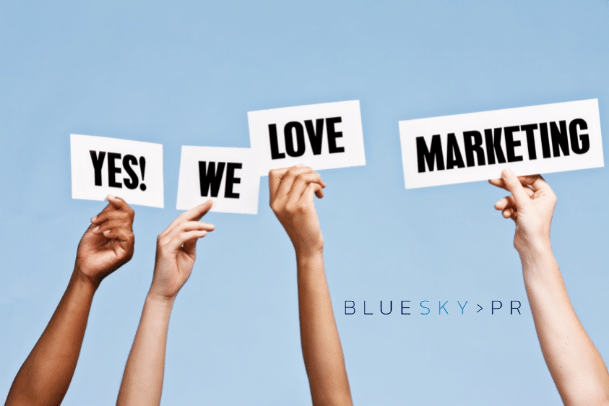
How easy it for talent to apply for jobs?
Inhouse hiring teams have a lot on their plate with sourcing, interviewing, vetting and recruiting candidates and the myriad other tasks they deal with on a day-to-day basis, so it’s only natural that some things may get overlooked.

How relevant is your employer brand today?
Even the biggest, most successful firms need a strong and well-developed employer brand. You could be a world class employer doing amazing things for your staff, but without this brand in place you will struggle to hire the skills you need and will miss out on talent to your rivals. However, it’s one thing building and developing this brand over time, you also need to consider whether it is still relevant in the drastically different employment world in which we’re now operating. So how do you keep your brand relevant and ensure it is up to speed with the demands and motivators of the modern workforce?

Is the traditional EVP on shaky ground
Employee Value Propositions (EVP) have traditionally focused on the workforce as, well, workers, and not much else. However, like so many other areas in the modern employment world, this has changed. But why is the traditional proposition on shaky ground and what must employers to do when adapting their EVP?

Why you should audit your EVP annually
The employment market is evolving rapidly, you won’t need us to tell you that. However, businesses that want to win the war for talent need to evolve their employer brand in line with it, rather than risk being left behind. Here’s why it’s so critical to regularly assess where you are carry out an EVP audit.

Why your EVP needs a shake-up in a post-Covid landscape
While not quite as much has shifted post-COVID as many expected during the height of the pandemic, it’s obvious that some areas of life have changed dramatically, perhaps most notably, the employment market.

Why you need an EVP
The importance of having a strong external consumer or customer brand enables your customer base to know that a product they invest in will have a certain level of quality and is obviously recognised as a fairly fundamental part of almost every business, but many firms aren’t aware that they also need a strong brand in order to recruit staff for themselves. But why is an Employee Value Proposition (EVP) so important in the modern world?

6 big differences between PR and recruitment marketing
Are you a recruitment agency looking to build and promote your brand? Public relations and marketing are two important tactics that can help you achieve your goals. But what are the differences between the two, and how can you combine them to create an effective strategy?

9 things you should know about personal branding
Personal branding is something that recruiters are often asked about, but many don't know what it is or how to get started. Personal branding for recruiters is about becoming a known entity within your industry. And it’s about creating a consistent persona across all your different platforms, so your audience knows what to expect from you. One of the key ways you can improve your personal brand is by creating content that builds trust with people who are interested in what you have to say.

Tips for responding to negative reviews about your recruitment agency
The concept of ‘word of mouth’ reviews has changed dramatically now that the internet is an integral part of our lives. Years ago, disgruntled clients and candidates would express their dissatisfaction by telling their friends and colleagues. Now, they tell the world via a frustrated tweet, withering LinkedIn comment or damning Google review. The speed at which these comments can be shared means that your business can suffer widespread reputational damage, which is why it is important to manage them with care. Just Google 'viral negative reviews' and you'll be amazed by how many results you get. So, if an unhappy client or candidate has left your agency less-than-glowing feedback, what can you do?

Recruitment Marketing: Return Reset Restart: Three Month Trial Packages
2020 has been testing for all of us, however we are starting to see shoots of optimism when it comes to the recruitment sector, which, as we all know, is often viewed as a barometer for the wider economy.

In-house vs agency marketing teams: the growth of the hybrid model
There are numerous viewpoints when it comes to whether to outsource marcomms to a specialist agency or keep it in house. But what about a combination of the two? Increasing numbers of companies are turning to a hybrid model where they keep some of the marcomms mix in house and outsource other areas to a specialist agency. And an effective relationship between the two parties can substantially maximise business results. So what are the top ways you can effectively work with an outsourced provider?

A look at WhatsApp’s approach to PR: And why recruiters should use it as an engagement tool
Since being founded in February 2009 as a way for co-founder Jan Koum and his mum to stay in touch with their family back in Ukraine, WhatsApp has become the world’s most popular messaging app with two billion active users worldwide.

Sales & Marketing alignment: 4 challenges that need to be overcome for success
I attended the Recruitment Network’s marketing round table last week and a key theme was how to get sales and marketing teams working together. And despite the fact that companies which successfully align sales and marketing not only drive more revenue, but also have better customer satisfaction levels, the subject has always been contentious. There a number of reasons for this – from a perception that marketing doesn’t drive sales through to cultural misalignment inherent within a business.

Why candidate experience matters in a crisis
In the months since our lives were turned upside down due to COVID-19 I have seen several posts on LinkedIn about poor candidate experiences – from the jobseekers applying for roles and hearing nothing – not even an acknowledgement that their application has been received – to those seeking advice and being met with silence. Of course, it’s important to note that there are exceptions to this rule, and some recruiters have ramped up their comms activity to ensure that candidate experience remains on point. In fact, I saw a great post from a recruiter who was on furlough asking her network to get in touch if they have lost their job and need help with CV writing or simply a chat about what their options are.

How to create virtual events: the top 5 tips
If you’re anything like the team at BlueSky you’ll be used to attending – and for many organising your own - industry events. At a time when we can’t attend in person, it is perhaps fair to say that many recruitment marketers are removing events from their future plans. But it doesn’t, and shouldn’t, have to be that way – in fact now is a great time to create virtual events for your clients and candidates. So, how can you organise a successful virtual event? And what should they be about?

Should recruiters be hiring a PR agency?
It might sound a little biased coming from me, but I’m going to explain why hiring a PR agency is worth it.
Sitting on a wealth of information? Here’s how to make the most of it
There’s no doubt that recruitment agencies are sitting on a wealth of important information, even if not all of them realise the full value of it. While recruiters will certainly be drawing on their own knowledge and the data in their CRM to help them source, shortlist, interview and place candidates, agencies will also benefit from sharing their understanding of the hiring landscape more widely. At BlueSky PR, we know that a great way for a business to position itself as an industry expert is by highlighting its unique insights into candidate and client behaviour. Here are our top tips for making the most of the information that you have.

Why your content isn’t working: the cardinal sins
Is your recruitment firm struggling to get candidates and clients interested in your content? If the answer is ‘yes’ you could be committing one (or more) of the cardinal sins of content production. So what are the top reasons your content isn’t hitting the mark? And, crucially, what can you do to fix it? You’re selling This is a big bug bear of mine, and something that far too many companies do. They use their content – whether that be a blog, newsletter or white paper - to sell their services instead of demonstrating their expertise. Potential candidates and clients want to know that you are experts in your field, an agency that can help with their career or talent attraction strategies. Leave the selling to advertorials or a pitch meeting when you have got your foot in the door! You’re not adding value In the same vein, too much content doesn’t address the pain points of the intended audience. When planning content themes, it’s absolutely vital that they are based on the information your audience seeks. Think about conversations you have had with clients and candidates, what’s keeping them awake at night? What recruitment struggles are they currently facing? What advice can you give a candidate about their job hunt? The list is endless. However, the key is that your content encourages them to read on because it will add value to their current situation.
Can a modern brand survive without a presence on social media?
When pub chain JD Wetherspoon recently announced its decision to shut down all of its social media channels – including Twitter, Facebook and Instagram – with immediate effect, it raised eyebrows, not least from those who understand how a presence on those platforms can add value to a business, if they are used strategically. Chairman Tim Martin said, in a now deleted tweet, “We are going against conventional wisdom that these platforms are a vital component of a successful business,” adding that the managers of its 900 pub branches agreed with him. He later told a journalist that, "On a commercial basis, it saves people in the company time and that will enable them to get on with their own jobs." Devise a social media strategy There are a few puzzling things about this decision. Firstly, Wetherspoons had more than 44,000 Twitter followers and more than 100,000 followers on Facebook. Clearly, there was an interest from customers in having social media engagement with the brand. However, interactions on these platforms were very moderate, with many posts receiving only a handful of likes. For a big company with so many followers, such a low level of engagement should have raised a red flag indicating that it hadn’t mastered the art of delivering relevant content to its followers which truly engaged them. The demand was there, but the social media strategy clearly wasn’t. Businesses need to have a clear idea of who they are targeting, what they want to say and how best to convey that message. If The Museum of English Rural Life can achieve nearly 107,000 likes (and counting) with its perfectly judged tweet about a ram, then Wetherspoons really needed to be thinking more creatively and aiming for far higher levels of engagement, adjusting the strategy if it wasn’t appearing to work.
Crisis 101: top tips for dealing with a PR emergency
Most businesses will find themselves dealing with a difficult public relations event at some point and some may experience a full-blown crisis, such as data theft, cyber-crime or internal malpractice coming to light. In our digital age, news goes viral almost instantaneously, meaning that the implementation of a swift and effective crisis management strategy is essential. The wrong approach can irreversibly damage your brand and its relationship with clients and business partners. One example of a PR disaster is Oxfam. PR Week says that, “As far as communications crises go, the latest Oxfam scandal has it all: public and media outcry, criticism from corporate partners, and serious questions from parliament and regulators.” Senior figures at the charity paid local prostitutes while on business in Haiti in 2011, which was reported on by The Times. The organisation has been heavily criticised because although it investigated the events at the time, it didn’t disclose them to a number of stakeholders and regulators. More examples of PR disasters
The Edelman Trust Barometer - the importance of traditional media
This year’s Edelman Trust Barometer - which measures trust across a number of institutions, sectors and geographies – reveals that social media companies have lost the trust of the public. In fact only a quarter of the UK population now say that they trust social media as a source of news and information. However there has been a huge increase in trust in traditional media (61%), reaching levels not seen since 2012, as well as a rebound in trust in experts and leaders. So what does this all mean for recruitment marketers? Media coverage matters Well first and foremost, no one is saying that social media isn’t important – it is obviously a fantastic way to broadcast your message – however what is more crucial than ever given Edelman’s research is that the content and messages you are broadcasting have credibility. And how do you get that credibility? One way is through appearing in the press that your target audiences read, trust, and turn to for information. PR is just a cost Despite this, however, many recruitment marketers that are only too eager to get their company featured in the press are prevented from doing so effectively. And it boils down to the same argument we hear time and time again. PR is deemed a cost rather an investment, a vanity project, and something that doesn’t help the business development strategy and deliver leads. The result is that too many agencies shy away from traditional media relations, instead opting for advertorials or nothing at all. So at a time when Edelman’s research clearly demonstrates that media really does matter, how can marketers get press coverage and, crucially, demonstrate its ROI? Getting press coverage…and effectively leveraging it

Top 5 tips for creating engaging content
Most firms understand the importance of having original content such as blogs, company news and professional insights on their websites. Firstly, if visitors to your site discover something useful or interesting, they are more likely to return. Secondly, it allows your firm to position itself as an authority and provider of relevant, engaging information. Finally, quality content gives you more material to share on social media, consequently creating wider exposure. This is also important as research shows that social shares influence where your website appears in search rankings. So, here are our top five tips for creating material with impact.

The biggest PR fails of 2017
So, we are almost in 2018. Depending on the year you’ve had, you may be sad to leave 2017 behind or, quite frankly, be glad to see the back of it. In the PR world, there are definitely some people wishing that they could go a step further and get in a time machine to restart 2017 from scratch. Here are five of the biggest PR fails of 2017.

How to use social media for brand building
At a time when the number of global users now exceeds 3 billion, it’s perhaps more important than ever that agencies are using the correct platforms to engage with their target audiences. So here are our top five tips for how to use social media for brand building:
Get much more out of a press release
When many think of PR, they instantly think ‘press release’. Well, yes they certainly do form part of the public relations mix, but there is so much more and companies need to be looking to get much more out of a press release and make the most of their PR activities. Is it newsworthy? First and foremost, if you are going to put the time and energy into writing a press release, it really must have a news angle. You might consider the fact that you have launched a new website or refurbished your office is fantastic news, but believe me journalists won’t! Think about what there is an appetite for and craft a release based on this. Your target audience is seeking advice and information on subjects that will help them in their day to day job. Think about what data you have access to – salary levels, skills in demand, pooling & pipelining and diversity - and use that to form a release about the market you operate in. This will have far more appeal and position you as an expert in your respective field. Once you have a good, crucially, newsworthy press release, here are my top tips on how you can get much more out of a press release:

The General Election and other great sources for content ideas
6 great sources for generating content 1. Your recruitment consultants They talk to candidates and clients on the phone every day. They will certainly have some quirky human-interest stories – they type of thing that they may not even realise is content but actually makes a really interesting story.

Top tips for effective content marketing
I was kindly asked to take part in UK Recruiter’s live webchat on content marketing for recruiters. A few technical blips from my end meant it didn’t really go according to plan – so for those of you who are interested in how to create effective content marketing here are my top tips: Have a strategy It’s essential to determine who you want your content to reach and what the objectives are. Do you want more candidates, clients or even staff for your own business? Do you want to build up talent pools that you can demonstrate your expertise to and tap into for future opportunities? Establishing this will enable you to tailor your content to each specific audience ensuring it is relevant. A strategy will also help dictate what type of content – whether it be blogs, videos, or infographics – are appropriate for each.

Why love your marketing department?
Time and time again I hear recruitment marketing professionals tell me that they don’t get buy in from their recruitment consultants and are often perceived as a cost to the business rather than an investment in it.
5 PR and marketing tips your recruitment business shouldn’t ignore
The top five PR and marketing tips your recruitment business shouldn’t ignore Whilst the recession certainly reduced the size of the UK staffing sector, today’s market is crowded and full of agencies vying to compete with and overtake their competition. Despite this, however, too few look at PR and marketing as a tool to not only differentiate themselves from their competitors, but to also position themselves as the ‘go to agency’ for clients seeking staff and for candidates looking for their next role. There is perhaps a tendency to view marketing and PR as a time consuming and often costly exercise they can do without. Wrong. If done effectively, it can help a staffing company reach its objectives and facilitate growth. Here are my top five tips: Create original, engaging content Perhaps an obvious statement, but any material you create – whether this is a newsletter, mailer, brochure, or media article – needs to not only be compelling, but it also needs to grab the reader’s attention. Like me, most of you will be inundated with content from third parties and, if they fail to draw me in, they not only don’t get read but the brand in question doesn’t strike me as an authoritative voice in their market. Your content needs to be engaging and offer the audience added value. Target your content correctly

The recipe for a monster marketing campaign
As a communications professional for the recruitment industry, I’ve followed the new monster.co.uk marketing campaign with interest. Ask any journalist the recipe for a compelling and engaging story and nine times out of ten they will tell you it needs a human interest angle. No matter how dull the subject matter, if a story talks to real people about issues that affect them, they will a) want to know more and b) want to share it with their friends too. Throw in some interesting statistics and a few celebrities and it becomes even more of a talking point. Monster.co.uk does just this with its ‘Monster Thank You’ campaign. The campaign invites people to thank an individual who has shaped their career, whether it be a colleague, boss, fellow student, teacher, relative or friend, and share their inspirational stories by submitting a message, picture or video via a unique ‘Monster Thank You’ microsite. Make your marketing ‘campaignable’ Not only are these inspirational stories infinitely shareable across social media, but the thank you theme as a whole is highly ‘campaignable’ - a factor in any successful marketing strategy. Not only did Monster raise awareness and drive traffic to its microsite with an above-the-line radio advertising campaign, the brand also supported this with traditional media relations activity by undertaking a survey of 2,000 consumers and 500 employers. This generated press coverage across both tabloid and broadsheet newspapers, as well as the recruitment trade press, and underlined the social media campaign by revealing that Britain is an under thanked and underappreciated nation. At the same time, the social media activity was given more weight and appeal with the addition of a celebrity endorsement by ex-Blur frontman Alex James, who featured in a looping Vine video. An integrated approach works for marketing communications

Q&A with Tony Goodwin, Chairman and Founder of Antal International
Antal International is a global executive recruitment organisation with 110+ offices in more than 35 countries. We caught up with Chairman and Founder Tony Goodwin to see how they use PR to achieve their recruitment goals. Why do we use PR? “In the B2B market it’s vital to place yourself as a thought leader in your industry. A good reputation comes through well considered and thought out views on the marketplace which is exactly what PR gives us. Advertising can often fail to hit the mark, I think it was advertising guru, David Ogilvy who said “50% of advertising is wasted; we just don’t know which 50%”. With PR this doesn’t happen. We know we’re hitting our target audience every time and providing them with meaningful content. Recruitment is an industry based on taking the initiative and sharing opinions and PR allows us to do this.” How do you measure ROI? “It takes a longer term strategy to effectively weigh the value of PR. But we’ve found that the continuity and consistency of our message pays back, which can only help in strengthening our brand. There’s no instant return like a betting company would expect to see from their half time advertising at football matches. But the overall value is much greater. I’m confident that over the course of two years we’ve seen up to a twenty-fold return on our investment. People are influenced by people and by positioning individual figureheads in the public eye we’ve created a voice that the company can base its message around. The results might not be immediate, but PR is a slow-burner and in the long term can do so much more for our business than advertising ever could.”
Top five PR tips for recruiters
As recruiters look to maintain a competitive advantage, get in front of key clients and attract some of the best candidates, many will turn to PR for support. However, it is all too common to find organisations jumping head first into PR without the necessary in depth planning. Any communications activities such as this are strategic, long term investments which will require a level of forethought in order to be truly successful. So, if you're looking at PR as an option, what do you need to consider? Take a look at our top five tips we shared with TIRA readers:

LinkedIn: recommendations vs endorsements
“Nothing says you rock at your job like a LinkedIn Endorsement” was a recent headline in the Chicago Tribune. The article, as the headline suggests, rates the company’s newly launched endorsement function. But is it as good as it’s hyped up to be? Or are recommendations a far more credible addition to a person’s profile?

Recruiter Q&A
For some recruitment businesses, the decision to undertake PR can be a hard one. Recruitment is hugely results driven and ROI is easily measurable. PR is different, and it can take some time to see results. With this in mind, we thought we’d feature a Q&A in each newsletter with a recruiter who uses PR, and why they do so. This edition we speak to Maggie Berry, Managing Director of Women in Technology. Q: Why do you use PR? A: We use PR to make female technologists aware of the opportunities available to them in the sector, as well as helping businesses to understand the importance of gender equality in the workplace. We have so much to offer the industry that one of our major goals is to ensure that every woman in technology comes into contact with us at some point during their career. This can be through a networking event, through our site, or through reading our advice in the press coverage generated through PR. Another reason is that it has a completely different effect to advertising. Anyone with the right budget can buy advertising space, but PR places you as an expert in your field within prestigious and targeted trade publications.
The changing nature of PR
What is your definition of PR? In our monthly team meeting here at BlueSky we discussed the various clients we have and what level of PR support we provide them. One interesting question that was raised was do our clients, and do people on the whole get PR? If you asked 10 people how they defined PR I am pretty sure that the vast majority would say it was getting an organisation’s name into the news.
